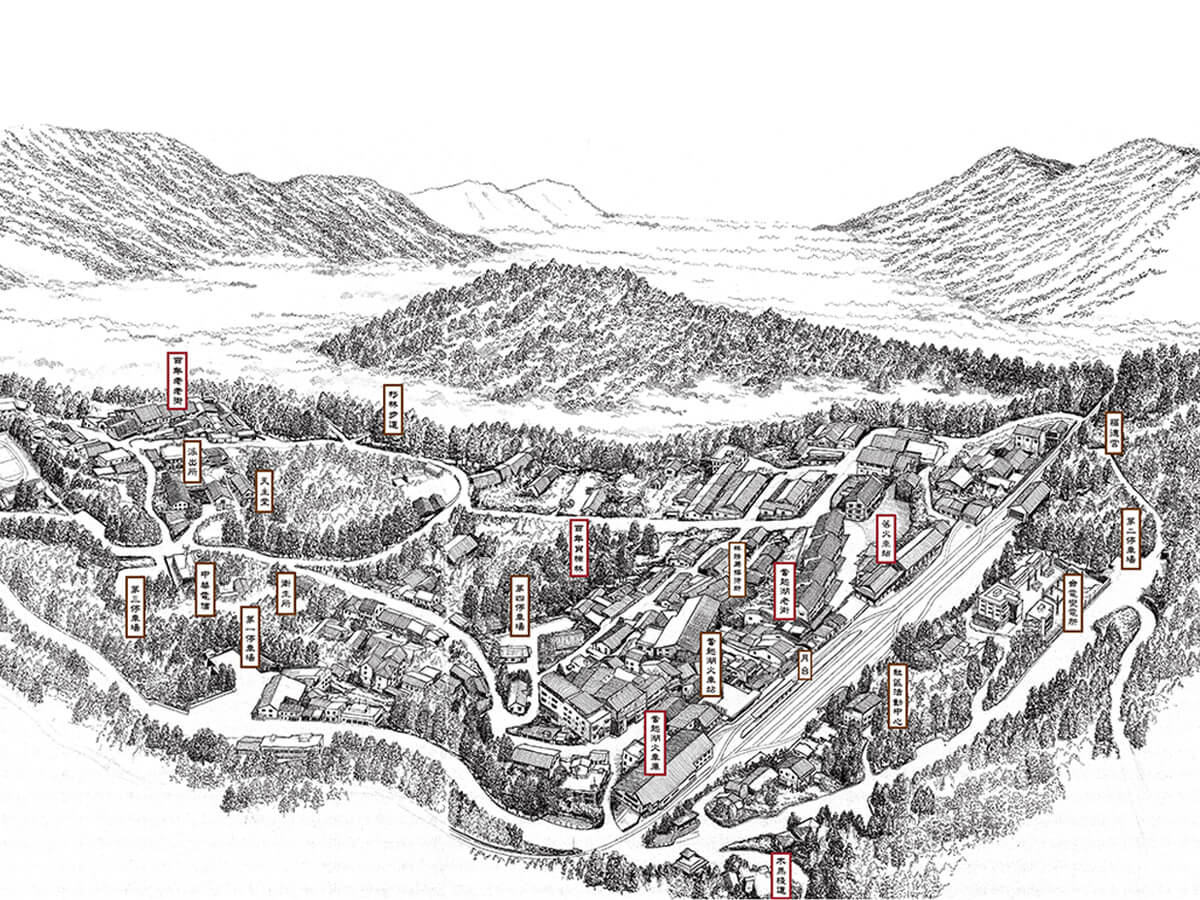


00:00


Nestled at an elevation of approximately 1,400 meters, Fenqihu’s name holds a unique story. Initially known as “Běnjīhú,” a term derived from the Hokkien dialect and meaning “dustpan lake,” its current name, “Fenqihu,” emerged as a more euphonious alternative. The name aptly reflects the area’s topography, which is surrounded by mountains on three sides and resembles a “basket” in the middle.
The early inhabitants of Fenqihu engaged in various industries, including rattan extraction, timber cutting, and lumber sawing. Before the railway’s construction, the settlement centered around Xiajiaodianzai, now known as the Old Old Street. The discovery of Alishan’s rich forestry resources and the subsequent construction of the Alishan Forest Railway propelled Fenqihu into prominence as a crucial transit hub. Loggers, afforestation workers, and railway personnel flocked to the area, fostering a bustling commercial scene with numerous shops and businesses. The thriving railway brought prosperity to the surrounding areas, prompting a gradual shift in settlement patterns towards the railway line. This transformation gave rise to the present-day Fenqihu Old Street.
However, the opening of the Alishan Highway in 1982 drastically reduced the railway’s significance, leading to a decline in Fenqihu’s tourism appeal. The tide began to turn with the revitalization and enhancement of Alishan Forest Railway tourism initiatives. Projects such as the “999 Project” introduced the Alishan Express and upgraded the Chunghsing Express to “Chunghsing Non-Stop Express.” In recent years, the restoration of the Fenqihu Loco Shed and the introduction of new trains like the Fuxin Express and the Xuyue Express have further revitalized the area. As part of the Alishan Forest Railway’s diverse operations, Fenqihu has once again become a popular tourist destination and a must-visit stop along the Alishan journey.
The early inhabitants of Fenqihu engaged in various industries, including rattan extraction, timber cutting, and lumber sawing. Before the railway’s construction, the settlement centered around Xiajiaodianzai, now known as the Old Old Street. The discovery of Alishan’s rich forestry resources and the subsequent construction of the Alishan Forest Railway propelled Fenqihu into prominence as a crucial transit hub. Loggers, afforestation workers, and railway personnel flocked to the area, fostering a bustling commercial scene with numerous shops and businesses. The thriving railway brought prosperity to the surrounding areas, prompting a gradual shift in settlement patterns towards the railway line. This transformation gave rise to the present-day Fenqihu Old Street.
However, the opening of the Alishan Highway in 1982 drastically reduced the railway’s significance, leading to a decline in Fenqihu’s tourism appeal. The tide began to turn with the revitalization and enhancement of Alishan Forest Railway tourism initiatives. Projects such as the “999 Project” introduced the Alishan Express and upgraded the Chunghsing Express to “Chunghsing Non-Stop Express.” In recent years, the restoration of the Fenqihu Loco Shed and the introduction of new trains like the Fuxin Express and the Xuyue Express have further revitalized the area. As part of the Alishan Forest Railway’s diverse operations, Fenqihu has once again become a popular tourist destination and a must-visit stop along the Alishan journey.











